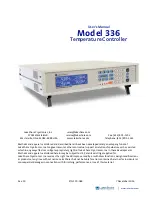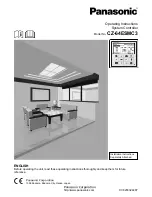
APPENDIX A: MAKING THE MOST OF LIGHTING CONTROLS
59
The savings that are realized by a switch from traditional lighting sources to LEDs are so
impressive that it's easy to be satisfied with just that. However, the most energy efficient
lighting solutions are the ones that are only on when they're needed.
NorthStar provides a number of efficiency options that aren't possible with traditional
photocell and motion switches that only provide on and off settings. The next portion of
this document is dedicated to optimizations and "best practices" that will help you take full
advantage of your lighting control system.
Dim Lights below 80% brightness
Modern LEDs are very bright and efficient, and it's easy to accidentally have more light than
an area actually needs. In NorthStar you can set the initial level for a light to be less than
100% power. Dimming lights to 80% power can provide impressive savings with no little
to no loss of available lighting. Moving the default setting below 80% can save even more
power.
For more on setting initial levels, see Editing a Light or Sensor Setting on page 49.
Use Jitter to Eliminate Power Surges
When a traditional lighting system is switched on, every light on the circuit gets power at
the same time. Each time this happens there is a surge in power usage that can affect your
power bill.
The Jitter setting provides a means for phasing in lights over a number of seconds to help
eliminate these expensive surges. Jitter is a delay setting, expressed in seconds, that
powers lights in a random pattern over a number of seconds to limit the effects of power
surges.
To implement Jitter in your NorthStar installation, see Editing a Light or Sensor Setting on
page 49.
If you want to implement Jitter in a large number of lights it may be easiest to make the
changes using a.CSV file. For an easy way to change a lot of lights at the same time, see
Importing and Exporting Light Configurations using a .CSV File on page 58.
Use Schedules and Sensors to Dim or Deactivate Lights
When They're Not in Use
The scheduling function in NorthStar allows you to set schedules that dim or deactivate lights
during a building's off hours. This is really helpful until circumstance dictates that someone
be in that area during a non-standard time.
Sensors can support a lighting solution by temporarily activating lights when motion is
detected, and then dimming them back to off when motion is no longer detected.
To learn more about schedules, see Events on page 39.
To learn more about adding sensors, see Adding Sensors on page 29.
WEB
VERSION






































